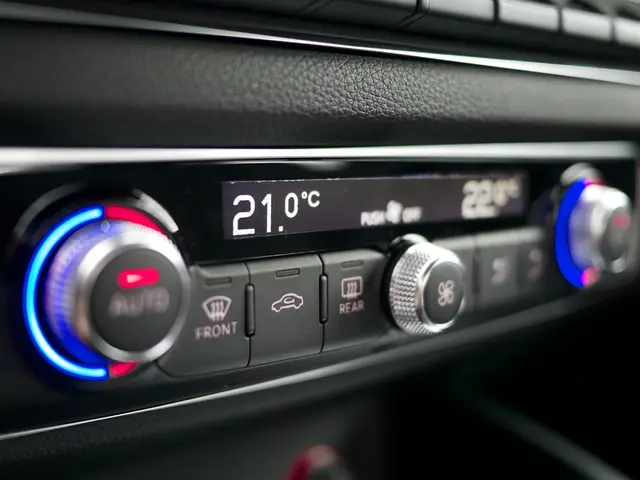Public transportation vehicles provide real-time capacity information
Ready for a less jammed ride? Dresden's Transport Authority (DVB) now reveals real-time vehicle occupancy, a long-awaited feature for many passengers. According to Martin Gawalek, the man behind DVB's traffic management and marketing, this valuable piece of info can be accessed on the web or mobile app. An ingenious automatic passenger counting system tucked away in the vehicles makes this magic happen.
Need to know if the next tram's going to be packed like a can of sardines? Or perhaps you're in luck and the following bus might have plenty of available seats. This nifty information could save you precious time and the discomfort of a crowded ride.
But that's not all! This data serves an even more significant role for DVB. They can adjust their service to respond rapidly to passenger demand, introducing additional trips or larger vehicles where necessary. They can even tweak schedules to better suit the ebb and flow of passengers.
Traffic light control isn't left out of this high-tech revolution, either. By understanding the number of passengers boarding or alighting, DVB can request longer boarding or alighting times at the preceding stop. Or, if the vehicle's not full, the green signal might be given promptly to the driver at the traffic light.
Martin Gawalek paints an exciting picture: DVB's digitalization is just getting started, with AI-based applications set to reshape public transportation further. These advancements promise to make departures more reliable, improve service matching to customer demand, and stabilize operations overall.
This new service forms part of a colossal European Union-funded project, with more than 330 buses and trams (accounting for approximately 85% of DVB's fleet) already equipped with the passenger counting system. The remainder is scheduled to get their tech upgrade throughout the year.
While the details of how DVB utilizes real-time data to optimize their services may not be widely documented, the potential applications are clear: From optimizing routes and schedules to enhancing the passenger experience and efficient resource allocation, this data offers immense opportunities to improve public transportation systems.
- The real-time vehicle occupancy information, a feature unveiled by Dresden's Transport Authority (DVB), can potentially save passengers time and discomfort, as it allows them to avoid overcrowded rides on public transit.
- Beyond benefiting passengers, this data is essential for DVB, as it enables them to quickly adapt their services to meet passenger demand, introducing additional trips, larger vehicles, or adjusting schedules for a smoother flow of passengers.
- Martin Gawalek, in his vision for DVB, sees the digitalization of their services as not only an ongoing process but also a catalyst for AI-based applications that promise to make departures more reliable, improve service matching to customer demand, and stabilize operations in the transportation industry and even in the realm of finance and technology.








